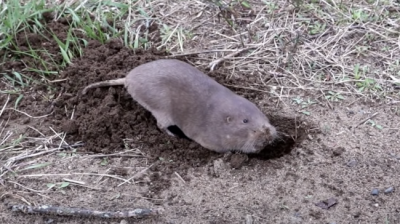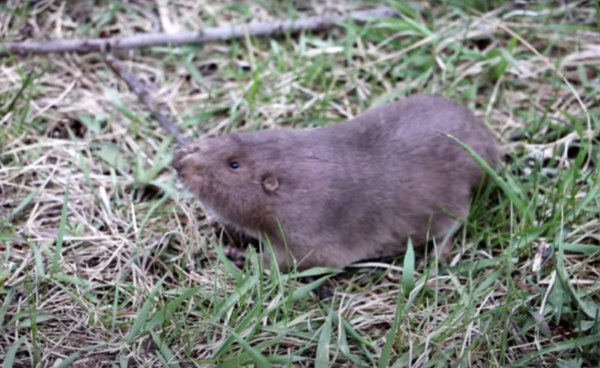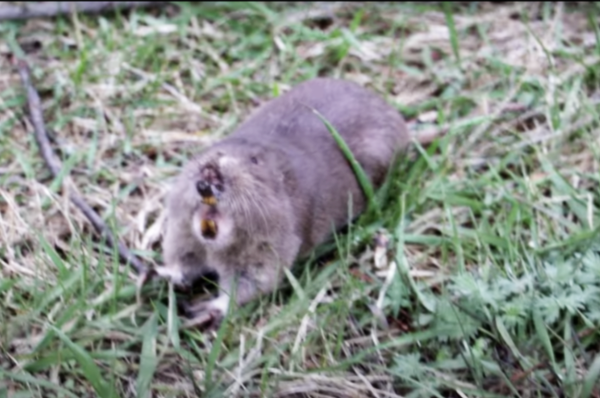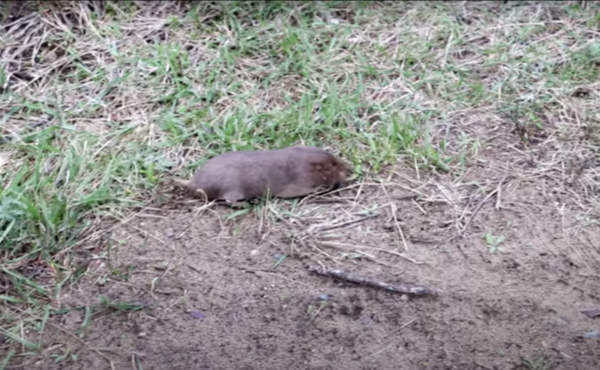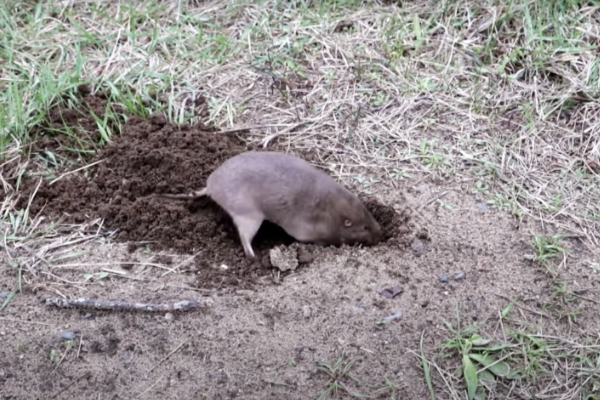Description
Gopher Description
Gophers, also named “pocket gophers”, are rodents belonging to the Geomyidae family. The Geomyids are fossorial, which means they live predominantly underground. The name “gopher” has become commonly associated with numerous other burrowing creatures, but true gophers have distinct qualities.
Appearance
The name “pocket gopher” is derived from the pockets of their stretchy cheeks, which are fur-lined, in which bits of plant food are stored for transport. These pockets extend back to the shoulders. They can be inverted so that they become external. Like most fossorial animals, gophers have tiny eyes with bad eyesight; and, like other rodents, their teeth are characterized by four long incisors that are always visible. Having the teeth in front of the lips allows the gophers to use their teeth to dig in and soften up dirt without it entering their mouths. Their appearance demonstrates other characteristics that aid them in their foraging and burrowing lifestyle, such as a cylindrical body, tiny ears, strong clawed front limbs for digging, smaller back limbs, and a short tail with little hair, that is very sensitive due to an increased number of nerves and blood vessels. It, therefore, aids them in navigation when moving backward through tunnels, and means they can walk backward as easily as forward. They also have very sensitive whiskers on their faces, which similarly aid with movement. Gophers do not have a visible neck. They have large skulls. They are between five and fourteen inches long (differing between sub-species), and on average about 0.2 kilograms in weight. However, the males are usually larger and weigh more than the females, sometimes double. A few species, especially in Central America, can weigh up to a kilogram. Their brown-gray fur tends to match the shade of the soil in which they live, and often there are white patches across the body-line. Some gophers, however, have reddish and even whitish fur.
Diet
Gophers are herbivorous and primarily feed on plant roots, shrubs, tubers, and vegetables. They locate their food using their sense of smell. They prefer to eat underground but occasionally appear on the surface to eat other plants. Usually they will come a very short distance out of a hole to grab a plant – such as a garden crop – before returning, either taking a few bites or dragging the entire thing down with them. These plants provide for the full diet of the gopher, who are well-adapted for such a diet. The large incisors continue to grow throughout their lives, balancing out any damage caused to the teeth by chewing on tough materials. The molars and premolars within the mouth are also ideal for crushing and softening the vegetation. Gophers hold food in their cheek pockets and transfer it to underground chambers.
Behavior
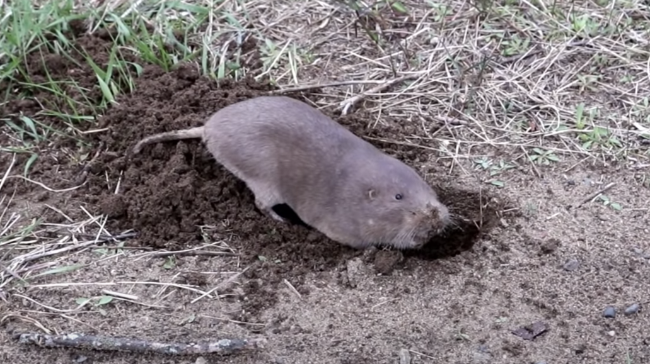
Gophers do not hibernate. They are active around the year, but most noticeably in the spring and fall seasons, which is when the soil has an optimal amount of moisture for digging. They can also be active at any hour of the day. They have an average lifespan of one to three years, with a maximum of five. However, it has been documented that some gophers in the wild have had lifespans of up to seven years. They become sexually mature at around one-year-old. Baby gophers are born in underground nest chambers and are completely blind at birth. The mother gopher remains with her young, called “pups”, for a few weeks or around forty days. After this period, they are sent out of the burrow to build their own. Generally, each mother gopher will give birth to three to six pups at a time, after a gestation period of one month, but the total number of litters per year varies depending on how much water is in the area. In an area that is well-irrigated, a female gopher can have up to three litters per year, but in an area that is not well-irrigated she is more likely to have only one.
Outside of the breeding season – which often occurs in spring, but varies significantly by region – gophers are solitary creatures, although their burrows are populated by many other kinds of animals. The burrows are usually constructed only a few centimeters below the surface and vary in size according to available resources, reaching between 200 to 2,000 square feet. Each tunnel is roughly two to four inches in diameter, and those leading to the surface are sealed with earthen plugs. If this plug is removed, a gopher will usually hurry to re-close the hole from within. The burrows provide protection and act as a place for food storage. They feature different sections which are intended for various functions – such as nesting, waste, and storing food – and are sized accordingly. The shallower tunnels are employed for foraging, while the deeper ones (which can be up to 1.8 meters deep, depending on soil type) are used for nesting, storage, and waste. Gophers are fairly aggressive animals and ward off other gophers from entering their own territory or burrow. Sometimes, male and female gophers might share some sections of their burrows if they border each other, but usually every gopher has its own tunnel system which it refuses to share.
Gophers build these tunnels by breaking up the soil with their claws then pushing it using their bodies into empty burrows or up to the surface. Therefore, evidence of the burrows is visible from aboveground, as a number of dirt mounds where the gophers have pushed soil up from beneath. Tunnel building may cease during colder periods. During the winter, gophers may pack soil into tunnels through snow, which leaves “gopher cores” of earth remaining after the snow melts.
Habitat
Gophers are native to North and Central America, and can be found in a variety of climates and habitats. Their distribution can seem surprisingly intermittent. However, areas with looser soil – especially which is covered in plants they can eat – is preferable, meaning that gophers often settle into gardens and agricultural fields. Because they are fossorial creatures, soil type is very important to them in locating a home.
